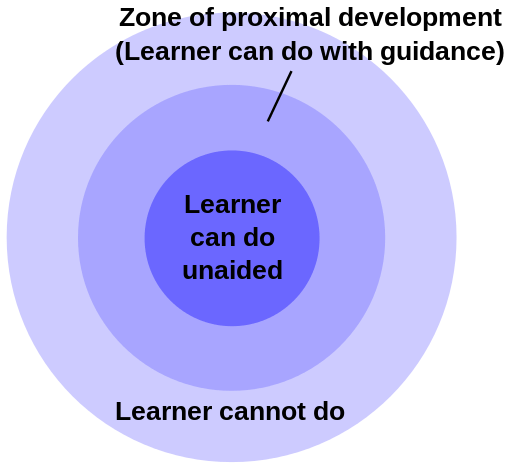Student-centered learning environments
Understanding the assumptions of student-centered learning environments can enhance teachers awareness of learning design features that puts the students’ learning needs at the center, including both the WHAT and HOW aspects of self-regulated learning.
Key assumptions
- Learning is facilitated by
- a learning environment that provides access to multiple perspectives and (contextual) resources
- authentic practices that situate knowledge-in-use, e.g. by learning activities where concepts are contextual and connected to practice (Muller, 2009).
- linkage to everyday experiences and what students know already, as this enhance students’ comprehension of how concepts are applied and why they are useful (Markauskaite & Goodyear, 2017)
- learning activities and environments that are open for adjustment to the emerging needs of the students (Goodyear, 2015)
- Learning cannot be ‘dictated’ by the teacher
- The teacher is a facilitator of learning rather than a presenter of information.The teacher is central in creating a learning environment that provides opportunities to be active, engage, explore, generate knowledge and take responsibility on basis of sound pedagogical support and expert knowledge.
- “Scaffolded participation” is based on the idea of teachers providing supportive assistance to the learner within the learner’s zone of proximal development (Dabbagh, 2003). The illustration of the zone of proximal development below is reflected in the middle ring showing what a learner can complete/understand with guidance, but not without it. This represents the borders of their current capability.

Situative model of learning
The model of situative learning visualizes key components of the learning environment.
1) All learning activities must be constructively aligned and relevant for the learning outcomes.
2) To acknowledge students’ individual learning skills, strategies, and experiences, the course design must acknowledge individual learning style preferences.
3) The learning activities must allow students to employ problem-solving learning strategies to reach a deep level of learning.
4) Teachers and students must have well established routines for interaction. Students must be accountable for nurturing a healthy learning environment for peers and teachers, and clear expectations to students responsibility in self-studies and interactive learning must be established. Teachers must scaffold knowledge construction also by providing assignments and exercises with a level of challenge that can increase the students level of independence. a well-balanced level of expertise and guidance
5) Open-ended assignments (within given limits) allows students to develop awareness of personal learning needs and build self-directed learning skills, required for lifelong learning. Assignments provide opportunities for feedback from teachers and peers.
Student-active teaching and learning activities (TLA)
Learning is an active process, where the learner constructs knowledge and understanding of a phenomena, concept or topic. According to this constructivist view, knowledge cannot be passively transferred from one person to another. Knowledge is constructed in interaction with the physical and social environment (Schunk, 2004).
Learning always includes two aspects: WHAT and HOW. The WHAT aspect is the outcome of the students’ learning, for example the anatomical concepts and the structure of a joint. The HOW aspect refers to the process of learning, including students’ strategies, motives and intentions. These aspects are intrinsically inter-linked. All learning occurs in a context where the learner and the context (physical and social) interacts (Illeris, 2007)
Planning of teaching includes consideration of the what and how aspect of learning. Student active TLAs are not only limited to the activities performed during a lecture or seminar, these also includes activities before and after the ‘classroom teaching’, such as; preparation, organization, making assessment tasks, giving feedback and making judgements of students’ performance (Ross & Stenfors-Hayes, 2008). To promote deep learning the teaching and learning activities should be constructively aligned with intended learning outcomes and assessments of the course (Biggs, 1996).
There is substantial evidence that student active TLAs are more effective than lecture. According to a meta-analysis (Freeman et al., 2014), courses that included student active TLAs had significantly greater gain in student performance than courses that were based on traditional lectures. The use of several student active TLAs coupled with consistent formative assessments have demonstrated better student outcomes compared with using fewer student active TLAs in a more teacher-centered approach (Connell et al., 2016). However, implementing even a few active TLAs into a lecture-based course can lead to increased student outcomes (Knight, 2005). Thus, even minor changes appear to have positive effects on students’ learning.
Central features of student active TLAs (e.g. Weurlander, 2012; Connell, 2016):
- student-centered
- encouragement of students to engage actively in their learning
- focus on problem-solving and application of knowledge
- inclusion of collaborative learning in pairs or small groups
- use of real life cases as a point of departure
- time for reflection
- formative assessment with a focus on facilitating understanding and not just assessment of factual knowledge.